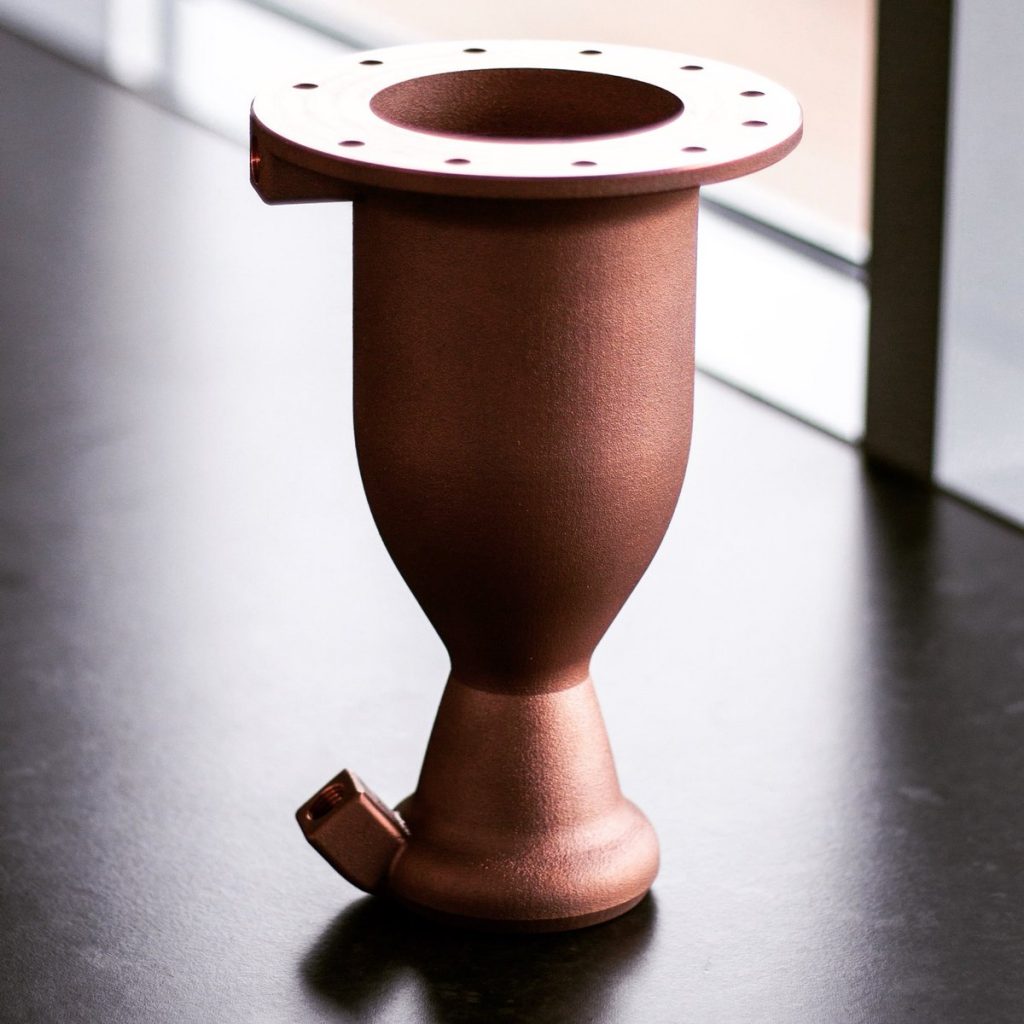Founded in 2017, Launcher is using 3D printing to develop a liquid oxygen (LOX)/kerosene rocket to transport satellites into low-Earth orbit. Now, with the successful test firing of a 3D printed copper alloy E-1 engine, the company is one step further on its 10-year journey to provide low-cost solutions for entrepreneurs seeking commercial satellite launch.

Commercial aerospace
In recent years, the aerospace industry has seen an increased interest from companies seeking to provide commercial services, such as private spaceflight and satellite launches for communications, navigation, weather forecasting, and telescopic study.
Launcher, like other aerospace startups of its kind (SpaceX, Virgin Galactic, Blue Origin and Aerojet Rocketdyne to name a few) is employing 3D printing on its mission to orbit.
With additive manufacturing, Launcher is able to develop engines at a faster rate than is would with traditional manufacturing. In the past two years in fact, the company has successfully conducted at least 8 hot fire tests of 3D printed thrust chambers made from Inconel, and now copper. Coupled with LOX fuel, 3D printing is also helping to make engine development more cost-effective. The company is headquartered in New York City, and based at New Lab, a technology incubator.
EOS rocket engine 3D printing
In June 2018, Launcher confirmed a manufacturing partnership with leading 3D printer provider EOS. Through EOS, Launcher was able to 3D print its latest E1 proof-of-concept engine out of copper alloy which performs better than Inconel in terms of cooling capabilities vs. combustion.
The E1 copper engine was 3D printed on an EOS M 290 system. In the test firing at Brooklyn Navy Yard, the engine was able to withstand the highest LOX temperature for a a period of 30 seconds. From this point, the Launcher team will be able to gradually increase combustion pressure to reach its flight goal of 1,400psi and the next generation E-2 engine.
For more aerospace updates subscribe to the 3D Printing Industry newsletter, and join us on Facebook and Twitter. Start a new career or find additive manufacturing experts, visit 3D Printing Jobs now.
Featured image shows a silhouette of the Launcher E1 engine. Photo via Launcher



